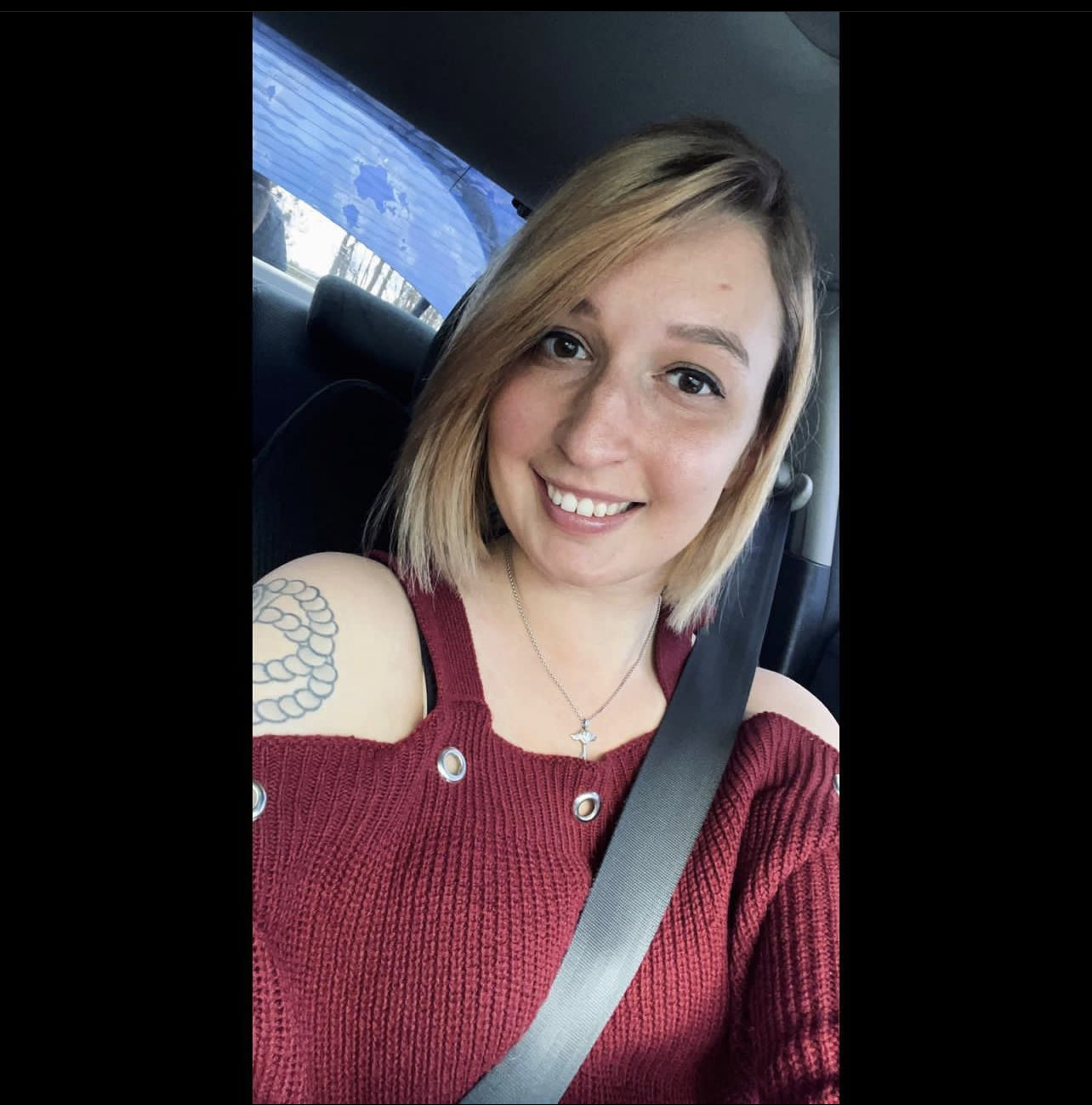 Summit Health team member Erika Dewling spends her days helping patients get the care they need. In November 2021, she suddenly became a patient herself. Today, the 28-year-old reflects on her unexpected diagnosis, a complex surgery, and her road to recovery.
Summit Health team member Erika Dewling spends her days helping patients get the care they need. In November 2021, she suddenly became a patient herself. Today, the 28-year-old reflects on her unexpected diagnosis, a complex surgery, and her road to recovery.
Erika remembers the moment she knew something wasn’t right. While running errands and returning to her car, she felt a sharp pain in her jaw. The pain lingered as she drove to a pharmacy drive-through, and while waiting in line, it got worse. Then, she couldn’t hear in her left ear and became dizzy.
“I called my husband and told him something might be wrong, and then the blurred vision and dizziness took over,” Erika recalls. Meanwhile, the left side of her face also became numb. She quickly pulled into a nearby parking lot and called 911.
“I thought I was having a stroke,” she says.
First responders arrived and checked Erika’s vital signs while her husband and parents traveled to meet her. Once medics confirmed Erika as stable, her family took her to the hospital for further testing, including a CT scan.
Later that night, a doctor met Erika and her family with life-altering news: Imaging revealed a tumor at the base of her skull.
Acoustic neuroma: symptoms and causes
Erika’s tumor was an acoustic neuroma, also called a vestibular schwannoma. It is a noncancerous tumor that forms on the eighth cranial nerve (vestibulocochlear nerve) that leads from the inner ear to the brain. Branches of this nerve are responsible for hearing and balance.
About 2 in every 100,000 people in the U.S. are diagnosed with an acoustic neuroma each year. What causes it is unknown in most cases, while for some, it develops due to a genetic disorder.
These tumors tend to grow slowly, so signs and symptoms can be easy to miss. As a tumor grows and begins affecting surrounding nerves, common symptoms can include:
- Hearing loss, usually on one side
- Ringing, hissing, or buzzing in the ear (tinnitus)
- Unsteadiness or loss of balance
- Dizziness
- Facial numbness or weakness
Erika’s tumor was 3 centimeters in diameter — she describes it as the size of a small egg. Jed Kwartler, MD, who treated Erika, says her tumor was large for its location and likely had been growing for some time. Dr. Kwartler is an otologist-neurotologist specializing in complex ear disorders, including acoustic neuroma.
Dr. Kwartler notes Erika’s tumor was pressing on her brainstem, adding a layer of complexity to her recommended surgery. Acoustic neuroma surgery aims to remove as much of the tumor as possible while preserving facial nerve function.
Erika says that despite her shocking and emotional diagnosis, Dr. Kwartler offered comfort in preparing her for treatment. “I was asking, ‘How is this possible?’ He had a good bedside manner and explained everything.”
A tag-team microsurgery approach
Dr. Kwartler teamed with New Jersey-based neurosurgeon Fabio Frisoli, MD, to perform Erika’s surgery. Because of the tumor’s size and location, Erika’s symptoms, and her age, they recommended a microsurgery approach called suboccipital or retrosigmoid surgery. This technique is often used for larger tumors that press on the brain.
During the procedure, the surgical team made a small incision behind Erika’s ear, creating a window to her cerebellum — the part of the brain at the back of the skull — and brainstem. With the tumor now accessible, Dr. Kwartler explains, they hollowed it out to reduce its size and eventually removed it while working around delicate surrounding nerves.
Drs. Kwartler and Frisoli were able to achieve “gross total removal,” which means they took out everything they could see of Erika’s tumor during the five-and-a-half-hour surgery. They also were successful in preserving her facial nerve function.
After Erika was discharged from the hospital, hard work lay ahead. "She progressed through six months of inpatient and outpatient rehabilitation including speech therapy, physical therapy, and occupational therapy. Dr. Kwartler says rehabilitation is typical post-surgery to improve balance. “The body goes through a cycle of rebalancing itself,” he says.
Although Erika’s hearing in her left ear couldn’t be preserved due to her large tumor, Dr. Kwartler says options are available to help patients. “There are hearing devices that can restore the ability to pick up sound on that side,” he explains.
Erika today and her message to others
Today, Erika is back to work as a patient service representative and doing everything she enjoys. “I’m feeling great,” she says.
“I’m thankful for having such a good team of doctors. And I’m most grateful for my family, friends, and community,” she continues. Erika says she pursued a career in health care because she enjoys helping people. She hopes to help others facing an acoustic neuroma diagnosis by sharing her story and encouragement.
“Never give up, keep working hard, and stay positive,” she says. “It does get better, but patience is key.”
